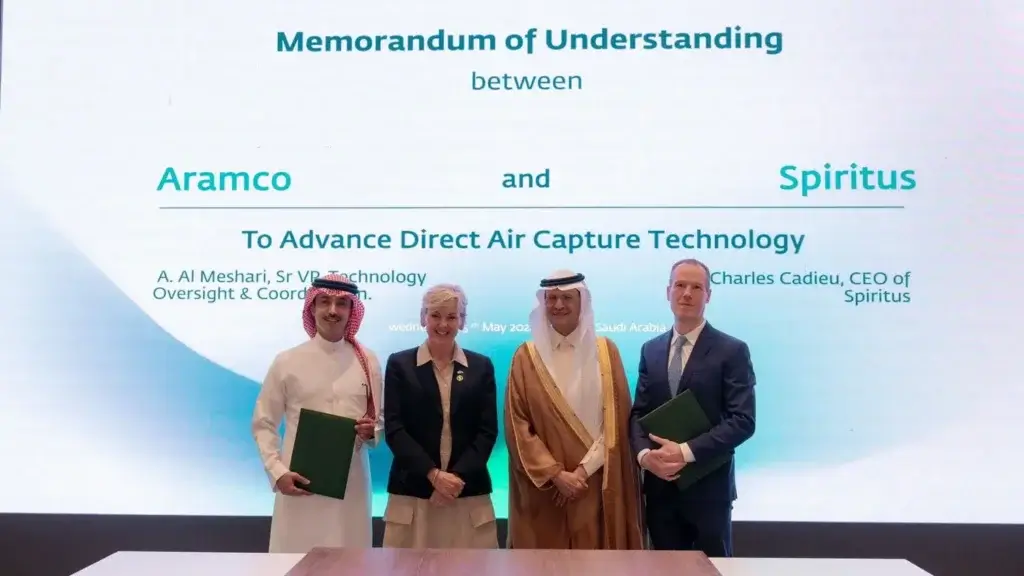LOS ALAMOS, N.M. & RIYADH, Saudi Arabia—(BUSINESS WIRE)—Spiritus, the climate tech company pioneering cost-effective solutions for scalable direct-air-capture (DAC) of carbon removal, today entered into a memorandum of understanding (MoU) with Aramco, one of the world’s leading global energy and chemicals companies, and has additionally announced that it received an equity investment in the company in November 2023, from Aramco Ventures.

“Aramco has stated its ambition to achieve net zero Scope 1 and Scope 2 greenhouse gas emissions across its wholly-owned operated assets by 2050, and sees opportunities to build potential lower-carbon new energy business.”
“Aramco has stated its ambition to achieve net zero Scope 1 and Scope 2 greenhouse gas emissions across its wholly-owned operated assets by 2050, and sees opportunities to build potential lower-carbon new energy business,” said Ali Al-Meshari, Sr. Vice President of Technology, Oversight & Coordination, Aramco. “Innovative technologies deployed at scale can help reduce the costs of reducing carbon emissions, and we are investing in developing these through our R&D, venture capital, and technology deployment programs. We believe direct air capture has the potential to play an important role in reducing carbon emissions from hard-to-abate sectors of the economy, and we see Spiritus’ approach to have the potential to scale globally, and specifically in the Middle East.”
Today, in the presence of Jennifer Granholm, United States Secretary of Energy, and HRH, Abdulaziz bin Salman Al-Saud, Saudi Arabia’s Energy Minister, the parties as represented by Spiritus CEO and co-founder Charles Cadieu and Aramco Sr. Vice President Ali Al-Meshari, entered into the MoU to explore further collaboration including: to further enhance Spiritus’ technology; potential piloting and scale deployment of Spiritus’ technology; and localization of Spiritus’ supply chain in the Kingdom of Saudi Arabia. The signing ceremony, held in Riyadh, Saudi Arabia, highlighted the innovation collaboration between the two countries to work towards their respective net-zero goals and ambitions.
Spiritus’ novel approach to direct air capture addresses the major cost challenges of current direct air capture approaches and includes reducing energy needs, passive air collection, and a proprietary sorbent material to remove carbon from the atmosphere at a tenfold increase in adsorption efficiency compared to existing methods.
About Spiritus
Spiritus is a climate tech company at the forefront of direct air capture (DAC) technology. With a dedication to innovation and sustainable stewardship of our environment, Spiritus has crafted a unique solution that achieves rapid sorption and desorption rates at a fraction of the sorbent cost versus state-of-the-art sorbents under passive DAC conditions. The company’s approach combines the Spiritus Sorbent and the Spiritus Carbon Orchard, offering a scalable and modular system for low-cost DAC and sequestration (DAC+S). Spiritus is committed to making carbon removal an accessible and practical tool in the global fight against climate change.
To learn more about how Spiritus is pioneering a feasible, scalable, and cost-effective approach to carbon removal, visit spiritus.com.
